|
Published on Medium on April 19, 2020. Read on Medium here. Lately, I’ve been having nightmares. The kind where I wake up sharply in the middle of the night and stare into the darkness, trying to discern what’s real. I pause for just a moment, feeling relieved that it’s only a dream. And, then I remember. And that sinking feeling returns. Because the reality is that many of us are experiencing multiple layers of Grief right now — individually and collectively. Loss of loved ones, loss of job, loss of security, loss of identity, loss of health and wellbeing, loss of connection, loss of a world that we thought we knew but maybe never was. Simultaneously, new wounds trigger pre-existing ones. Childhood wounds. Family wounds. Generational wounds. Systemic and historical wounds that many of us had long before this crisis hit and that will continue to hurt long after this crisis ebbs, and another flows. If you’re like me, you might be feeling emotional as hell. The mood swings feel like erratic yo-yos swinging from all directions. It’s exhausting. But that’s what Grief is. If you’ve lost a loved one, you might be familiar with the Kübler-Ross Grief Model. Hospitals and grief counselors love handing out little pamphlets describing the five stages: Denial, Anger, Bargaining, Depression, and Acceptance, or DABDA for short. The model was originated by the Swiss-American psychiatrist in the late 1960s as a tool to help patients with terminal illness make sense of their emotions as they moved through the painful process of reckoning with death. Over the years, mental health professionals — including Kübler-Ross herself — have updated the model, adding more stages to validate a broader range of emotions when coping with any kind of loss. Like all models, DABDA looks really nice on a chart. It gives us hope that we are just in a phase. Soon we’ll move onto the next one, and then the next… and if we follow the “normal” path of human emotion, there might even be a deeper level of meaning beyond Acceptance. When my father was dying of pancreatic cancer, I was obsessed with DABDA — constantly checking my emotional state to see which stage I was in — then feeling worse about myself every time I reverted back to Anger. But the thing is — Grief doesn’t alway follow a predictable cycle. And the problem with models is that when our experience doesn’t fit the mold, we may feel self judgment and shame. “Not only do I feel like sh*t, but now I feel bad about feeling sh*tty because clearly, I should be over it by now.” That old chestnut. And so long as we are paralyzed with self judgment, we aren’t feeling the underlying feeling that needs validation in order to move through it. In real life, Grief may feel like a wave. Or a spiral. Or it can feel like a jumbled mess of emotions that come, go, or stay, at any point in time. We may flip flop from Frustration to Sorrow to Joy, to Anger, to Gratitude — all in a matter of moments — and, that’s okay. And while some may call out Anticipatory Grief — the feeling of impending uncertainty or doom, and Vicarious Grief — the feeling of pain over another’s loss — those feelings are still Grief, and they are still valid. Labels can be helpful for some, and minimizing for others. In the end, it’s all Grief.
So here is the opportunity: What if we reclaimed ourselves as the experts of our own healing journeys? What if we got curious about our own (and others’) desire to bypass, numb, or shortcut the sh*tty feelings and move on, because we (and others) feel uncomfortable with feeling uncomfortable? What if we acknowledged our right to just feel what we feel, and to have that be okay? Because even though my path may look different from yours, honoring our agency to create our own paths is what healing is all about. And that is one way that we can get through these difficult times — together.
1 Comment
Originally posted on Global Gratitude Alliance's blog: Gratitude For Good Like so many I know, I have been having panic attacks lately. Making breakfast. At the gym. In my bed. Some are mild. Others are not... Suddenly, my heart is racing, ears pounding, chest tightens, stomach doubled over in pain, and I can't breathe... I'm grateful for the knowledge of what is happening when it's happening. So, I do all the things I am supposed to: Stand against a wall. Breathe deeply. Notice the sights and smells around me. Pat my arms and legs. Allow myself to cry if I need to. And remind myself of where I am - that I am not being chased by a tiger in this moment (literally, if not politically or existentially). And after several minutes, when my nervous system has calmed down, I write down what I was thinking about before it came, so I can talk about it with someone later - my therapist, Andy, a friend (thank you Rachel!). This last time it happened, a voice whispered in my head over and over, until I was saying the words to myself out loud: Protect your tender and ferocious heart. Protect your tender and ferocious heart. Protect your tender and ferocious heart. ***** I'm learning to embrace my inner wisdom without questioning it. And here's what it's telling me in this moment. 1. Name the response. Overwhelming anxiety is a normal response to the extraordinary times we are in as individuals and as a collective. Shame, silence, and stigma about trauma, toxic stress, and anxiety are metabolized into the body and can lead to long-term health issues, chronic pain, and disease. I will NOT feed that. Rather than hiding it, naming it aloud helps. 2. Express it. I was socialized to be a "good girl" - the kind who doesn't express anger. Oh, I feel it alright. But it used to stay frozen inside me until I numbed it (in a variety of ways). Lately, I've been practicing expressing that anger. Screaming. Shaking. Wailing. Beating my pillow. (Whatever feels safe in the moment - sometimes that is silent screaming.) And when I do it fully and completely, a cathartic relief washes over me like cool water over a fire. My whole body feels differently afterwards. And can be open to a new possibility. 3. Lean into community. I am an introvert (doing an extrovert's job). I need plenty of alone time. And... I also need community. This is not the time to retreat into the depths of my private echo chamber where my head continues to ruminate with obsessive thoughts, anger, and fear. It is time to connect, share, love, nurture, be vulnerable about how I am feeling, and strengthen my community... which in turn strengthens me. Because that is what builds resilience. And collective power. And holy shit, do we need that. 4. Protect the heart. My heart is fucking broken. And I want to lash out (and at times, I have been). But underneath my fury is deep sadness. I must tend to that grief with care. Because doing anything else will simply be acting from that place of fear and hate that got us here in the first place. That cycle of trauma and harm that will persist until I, we, disrupt it with love and healing. So that I, we, can cultivate the hope that is so desperately needed to imagine and create a world different from this reality. For me, that means all the self care / self love stuff: eating (mostly) healthy, body work, resistance training (helps with the anger!), sleep, petting animals, enjoying nature, practicing gratitude, and making it a point to reading about and watch positive things to help rewire my negativity bias. And, I will continue to say this prayer / mantra / blessing to myself. Over and over. As many times as I need to until my heart rate slows down, I can breathe again, and remember my purpose for being here on this planet: to give and receive love and connection. If it feels right, I invite you to say it with me. To feel the meaning of the words as they seep into your cells. And to give yourself the love and care to heal your heart too. It was such an honor to be a guest on the Beyond Surviving podcast, hosted by Rachel Grant.
I tell my story, talk about what it takes to heal, and explore why healing in community is so critical to recovery. You can listen to our 35-min. convo on iTunes here. Big hugs of gratitude to Rachel and a shout out to Rachel Grant Coaching for the opportunity! This is a repost of a piece written by Amy for Rachel Grant Coaching published here on December 19, 2017 and is a follow on to 5 Ways to Heal Your Abandonment Wound A couple years ago, I had a conversation with a wise woman who used the term recovering overachiever to describe the ideal qualities of people that her organization likes to hire. A jolt of energy ran through my body as I heard those words. Yes! That’s me!
Many people like me who suffer from abandonment wounds or other kinds of childhood trauma can link their obsessive perfectionism to that childhood pain of guilt and shame from feeling unworthy and unlovable. My mom tells me stories of being a worrier, even at 3 years old. She’d give me a crayon and paper and show me how to write a-m-y. I’d stand there next to the end table in the living room, crayon in hand, for over an hour - worried about making those a-m-y letters perfect. Uh-oh, she thought, this one is going to be a real worry wart. Yes. I was. Not surprisingly, as a dancer for nearly 20 years, my obsession with perfection led to bulimia. Sadly, there is indeed a high correlation between obsessive perfectionism and eating disorders. And, I sure as hell wasn’t going to fail at bulimia - I was obsessed with doing even that perfectly. The rituals - washing the hands, carefully placing my towel on the floor, then a large tupperware bowl on top, perfecting what foods I could vomit easily, hiding the tupperware in my closet so no one would know, then sneaking into the bathroom to flush it down the toilet after everyone was asleep - all of that I did with a level of perfection that made me feel proud and very much in control, while my emotions and the world around me spun out of control. Until one day, after I shoved my finger down my throat, I looked down at my hand and it was covered in blood. How could this have happened? I had calculated everything so precisely. I thought I was the perfect bulimic. And, the validation from my dance instructors made it all worth it. They complimented me on rapid my weight loss - all that extra jogging I was doing on top of hours of dance practice very day (oh, and the secret vomiting) must be the winning formula to my slimmer dancer body. Yay for me! Looking at the blood and saliva running down my hand, I felt both panic and utter failure. I didn’t realize then that that moment was the first step towards my recovery. It would take well over a decade to stop the bulimia altogether, through a combination of medication, individual therapy, and group therapy - and another decade to continue treatment for the depression that goes hand in hand with eating disorders. But alongside that, I started learning how to embrace the imperfection that is life. Changing my job from one that encourages obsessive perfectionism (as a CPA) to one where I must surrender to chaos (in a nonprofit that works in global trauma recovery) has forced me to let go of over controlling everything and everyone, and to start looking at failure as an opportunity for learning and growth. And… I’m still in overachiever recovery. Here’s what that looks like for me: Self-compassion above all I took Stanford’s 8-week Compassion Cultivation Training (CCT) and it changed my life. Learning self-compassion was like learning a new language - it was hard, required baby steps, and opened up doors to connection. I still have to work at it every day (some days are harder than others). But, I can now soften towards myself - and not just towards my wounded child self - but also towards the adult version of myself who I’m good at judging harshly. She also gets to be human, make mistakes, and in doing so, connects more deeply to her own humanity and that of others around her. Compassion for others Any judgement or resentment that I may feel towards others is often just a reflection of my own insecurity and need to be perfect in order to be loved. Ever heard that quote: When you point the finger at someone, there are three fingers pointing back at yourself…? I hate to admit it, but it’s true. CCT and lovingkindness meditationshelped me see those around me in a whole new way - as complex humans who inherited trauma, just like me, and who have their own coping mechanisms, just like me. Notice when I’m fixating Even if I embrace the chaos, I still find other ways of trying to exert control. Sometimes, it can feel liberating or even helpful - like stopping in the middle of my workday to clean the inside of the microwave or taking a 5-minute brain break to meticulously color mandalas in my adult coloring book. Other times, it can be counterproductive - like throwing a tantrum at 11pm because someone left a dirty dish in the sink (No wire hangers!), or realizing that I’ve changed the color of a particular cell in Excel 6 different times because I can’t find the perfect shade of green - meanwhile I had a deadline to get that spreadsheet to someone yesterday. When I try to stay present and notice what’s going on, I can see it and name it: Oh, I’m fixating. This must be about something else. What’s the worst thing that will happen if I let this go and move on? Practice imperfection with intention When I started grad school, I reverted back to my 3-year old self trying to write my name perfectly. I spent so many extra hours on assignments, where that extra time had no benefit to my actual learning process. I got a 99.25 out of 100 in my first class and found myself writing an email to my professor to argue for that last 0.75. Luckily, I called myself out (and by I, I mean my husband) before I sent that email. I’ve now started to intentionally just do what’s necessary to get by. No, not with everything. But with the many things where it doesn’t fucking matter. Like letting the kitchen be messy when I know people are coming over, throwing away those papers that I will never file and don’t need anyway, and leaving those spreadsheets an unsightly black and white when they don’t need color coding! These may be small things but they are symbolic. They’ve helped me to surrender and built that muscle that helps me cope (most of the time) when the bigger, more important life things happen. Remember that recovery is a lifelong process If recovery were school, I’d try so hard to get an A. But it’s not. It’s messy and imperfect (sigh). Oftentimes, my overperfection hurts people, and I need to own up to it, apologize, and practice compassion for myself and others. Mostly, it hurts myself. And, if I can stay in the process, notice, acknowledge, and not fall into shame, then I can build new neural pathways to heal those old wounds. Luckily, I have a dozen chances to do that every day. This is a repost of a piece written by Amy for Rachel Grant Coaching published here on December 6, 2017 Confession: I am the original martyr.
It’s true. Just ask my husband. Or my parents. Or my friends. I always have to do it alone. No one ever helps me. In fact, I’m just alone all the time. After 41 years and decades of psychotherapy, medication, meditation, healing circles, and all the things I am supposed to do to take care of my inner child, it still hurts. But, childhood wounds are deep. And, my healing journey is not linear. For me, abandonment isn’t a myth. It was a true story. At least, my adoption paperwork said so: Abandoned at a police station in Seoul, Korea. No family history attached. My adopted parents always reassured me that I was loved - otherwise, I wouldn’t have been left at a police station where I could be found and cared for. That made sense in my head. But, I couldn’t reconcile that in my heart. I tried to visualize my birth mother leaving me at the police station and being able to walk away. Did she cry? Did she look back? How could any mother do that? I grew up feeling a profound sense of loss, an overriding fear of being alone, and the deep shame of feeling unlovable. But, abandonment issues aren’t just for adopted kids. Anyone who has experienced loss, neglect, abuse, or lack of attunement (physical and/or emotional responsiveness) from a parent, caregiver, or loved one - especially during childhood - may suffer from abandonment wounds, even later in life. As a child, my wound looked like trying to win the love of my adoptive parents by being perfect - straight A’s, dancer, musician, volunteer, and all the school clubs - then as a young adult, lashing out by engaging in risky behaviors (sex, drugs, and alcohol). On the outside, I looked like little miss overachiever. On the inside, I felt alone, miserable, and unloved, suffering from depression, bulimia, and self-hatred. As an adult, my abandonment wound looks like (still) trying to be perfect - then beating myself up when I’m not. Stressing over the small stuff. People-pleasing. Taking personally other people’s shit. Feeling like a martyr - or even putting myself into situations where I can be the martyr (then complaining about it later). Sound familiar? The good news is that it can get better. At least, it did for me. The first step: acknowledge the abandonment wound While I’m not one for labels (that’s a lie actually, I have a deep love for my electronic label maker), naming my abandonment wound made me feel like it was valid - and that my resulting emotions and behaviors were justifiable. As someone who has always felt crazy, the impact of acknowledging my wound helped me feel normal. Notice, with curiosity how it shows up… then honor the wounded child For me, this started with a list of the ways in which my childhood wound has affected my life. Though I love making lists, this one was painful, eye-opening, and like the naming exercise above, liberating. I listed out all the emotions, the people-pleasing and self-sabotaging behaviors, the fear-based career moves, and even the ex-friends and ex-boyfriends who meandered into my life, and who left, painfully and dramatically. Sure, maybe not everything can be wholly traced back to my abandonment wound (there were certainly other wounds too), but noticing patterns - and trying my damndest to do it without judgment - has been super fascinating and highly educational. I now get to see myself with a whole new level of self-compassion for the wounded child that I once was. And, I get to notice, with much more awareness, when that wounded child shows up at my doorstep and wants to be acknowledged and loved. Resource, resource, resource In the world of healing, resourcing is doing something that feels good, regulates the nervous system, and reminds the brain that I am not in danger in the present moment, so calm the fuck down and reeeeeeelax. So, when my wounded child shows up, and that familiar feeling of panic, scarcity, and fear of being unloved rises up in my chest, I do something resourcing. For me, that looks like breathing, meditation, music, dancing, yoga, hiking, cuddling my cat, getting a massage, taking a bath, or watching movies that help me release my sadness. Once the chatter in my brain and the pain in my heart subsides, I can, from a more regulated, state of mind, body, and heart, think about what might have triggered my abandonment wound. Then, I can move to the next step... Own what’s mine. Dump what’s not With abandonment trauma (and most other traumas, for that matter), one of the most painful feelings is the lack of agency. I had no choice in being abandoned. Someone did it to me. And it fucked me up for years. But, with healing, I get to reclaim my sense of power. When I find myself building a narrative about how I always have to do it alone, or how I’m always failing at being perfect, I get to (from a resourced state) acknowledge that my wounded child was triggered, own my own feelings, and then release anything that doesn’t belong to me (like someone else’s guilt, usually the result of their own wounded child). Resource, resource, resource And, then I come back to my resources. Again, and again, and, again. Because healing, for me, is a lifelong, never-ending process of my wounds showing up, acknowledging and honoring them, owning my own shit, releasing what is not mine, and taking care of myself with self-love and self-compassion every step of the way. When I pay attention, I get the opportunity to heal even the tiniest part of my old abandonment wound. And when I don’t pay attention, without fail, it’ll come back to teach me a bigger lesson next time around. Ironically, when I finally did look my trauma in the face years ago when I reconnected with my Korean birth mother, I learned that I was never, in fact, abandoned. At least, not in the way that my paperwork said I was. Learning the truth of my story hasn’t lessened the pain from my abandonment wound. But, it has helped me reframe my abandonment trauma into intergenerational trauma. Tracing back the legacy of trauma in both my biological family and my adoptive one, and seeing how those cycles impact me today, has been, in many ways, resourcing. It’s a poignant reminder that, it’s not all about me and my wound. It’s about healing generations of wounds - for my ancestors, and for my future children. And, that, is a gift. Originally posted on Global Gratitude Alliance's blog: Gratitude For Good May is one of my favorite months of the year. Spring is in full bloom (hello, allergies) as bright pink, orange, and purple flowers flaunt their beauty, brightening up my garden and my day.
Perhaps it is fitting then that May is Mental Health Awareness month (who wants to celebrate mental health during gray January?) - a time to raise awareness about living with mental illness, so we can break the silence and promote mental health and healing. But, I’m gonna be honest: I’m frustrated. I’m frustrated that national conversations about mental health in America tend to only happen when they are linked to an episode of gun violence. I’m frustrated that the Netflix show, “13 Reasons Why” had so many opportunities to highlight the urgency of caring for our youth’s mental and emotional health - and they totally missed the mark by focusing on revenge and romanticizing suicide. I’m frustrated that with umpteen million social media platforms promoting sharing and human connection, we are still stuck in a cycle of silence about mental health and well-being. And, frankly, I’m frustrated that we are still even calling it mental health and well-being. Because really, isn’t it human health and well-being? Thanks to science, we know that mental health affects not only our cognitive brain, but also our physical health, emotional health, and our connection to self, family, community, and the world. But when we reduce trauma, for example, to just a mental health issue, its causes and treatment get de-prioritized and de-funded like many other mental health issues in our schools, in the workplace, and in our health system. When really, it should be treated like the community crisis that it is. Trauma is a symptom of family, of origin issues, violence, bullying, abuse, and systemic oppression and injustice. Its causes and effects are deeply relational, impacting families, schools, workplaces, and communities. Yet it can also lead to lack of focus in school, loss of economic productivity, and breakdown of civil society. Left untreated, its effects are inherited by future generations. But, before we can even start to tackle the problem of trauma or any other holistic human issue - we have to start talking about the hard stuff. We have to be willing to share not just our selfie vacation porn, but also our real human-ness - our sadness, despair, fear, vulnerability, imperfections, and all the complex, emotional, messy shit as well. And, it doesn’t have to be online. It could even be, dare I say, in a real, live human conversation. And, likewise, we have to respond to others with compassion and kindness and stop trying fix their problems or tritely say, “Don’t worry, it’ll get better...” - because when was the last time you actually felt better when someone said that to you? Sometimes just having another person acknowledge our pain is all we need. So, next time someone reaches out to you in a time of need, try something like this: “Thank you for sharing with me. I’m so sorry you are feeling shitty. I can really feel your pain and sadness. I care about you, and I’m here for you if you need a hug, a shoulder, or someone to just listen. You don’t have to go through this alone.” Bottom line: let’s be more vulnerable, and in doing so, create positive human connection and health. Like any good facilitator, I will model it first. Here I go: My husband’s grandpa recently died. During the funeral, while I was crying, I realized that my tears were awash with guilt and sadness over not spending enough time with my own grandparents when they were alive. I didn’t ask them stories about their childhoods. I didn’t ask my grandpa how hard the Depression was, or my grandma what it was like to be told she couldn’t go to college. Instead, I was a self-absorbed teenager who cared more about whether my friends liked me than about spending time with my sassy grandma before the Alzheimer’s really took over. Then, I felt bad that I was crying over my own stuff instead of supporting my husband through his grief. So, that’s me. Now, you go... Originally posted on Global Gratitude Alliance's blog: Gratitude For Good
Originally published on Global Gratitude Alliance's blog: Gratitude For Good It’s time to shift the paradigm.
We are being called to evolve together. To make way for something that brings us to a deeper level of awareness, connection, and purpose - for ourselves and for the world. It starts from within - with the simple act of noticing. Some call this mindfulness - being aware, in the moment, with intention, and without judgment. There’s mounting evidence supporting the benefits of mindfulness to our health and well-being - at work, in school, and in our relationships. So, we asked ourselves, can the practice of “being present” help us shift how we give? Pioneers like International Development Exchange (IDEX) have been taking a mindful approach to philanthropy for decades. One that is rooted in presence, mutuality, and collaboration. One that remembers that all the great movements for social change start at the grassroots level. And, one that values authentic connection - which starts from a process of profound self-examination - of noticing what’s going on inside us and how that informs what goes on around us. Learning from IDEX and other mindful changemakers at the IDEX Academy this year, we were inspired to join the movement. To push beyond our comfort zones and embody something that is innovative, yet rooted in indigenous wisdom. Something that seeks to transform others, yet is grounded in transforming ourselves first. In truth, we are outgrowing our forefathers - those centuries-old founders of charitable giving - and the paradigms that informed them. We bow to them and the groundwork they laid, such that we can now see what is needed to meet the injustices of our modern world. We are aware that traditional top-down, outsider-led aid has been ineffective at radically transforming the lives of those it intended to serve. We see this in the abysmal health, education, and social service infrastructures in the poorest recipient countries of aid. We see this in the continued spread of preventable diseases, in the unjust differences in maternal mortality rates per country, and in the unnecessary increase in the number of orphans and vulnerable children affected by HIV/AIDS. And, we see this in the eyes of the 2 billion people in the world still living on less than $2 a day. Yet there are also negative effects that we cannot see. Cloaked in images of starving children with distended bellies, paternalistic, outsider-led models have little to do with human dignity and community self-determination. Rather, they are based on the misconception that outside experts can ‘fix the problem’ - a problem that traditional aid, colonization, and globalization may have created in the first place. What’s more, such models perpetuate the age-old victim paradigm and harmful stereotypes of helpless, destitute communities saved by ‘whites in shining armor’ - a dangerous hero narrative that further absolves the everyday person from taking action. Many of the more recent impact and grant-making models still leave room for improvement. They ignore complex interdependencies, value short-term outcomes over long-term impact, and use ‘carrot and stick’ approaches that maintain imbalanced power dynamics between those who give and those who receive. We are ready for something different. And, most of us who are called to help shift the paradigm want a new way to be engaged - one that asks us to come into a deeper, more relational world together, to forge the kind of sacred connections that our ancestors held as the key to a thriving planet. In the spirit of a movement that values not just the impact to the communities we serve, but the impact to human dignity that occurs when we transform heart, purpose, and action into meaningful connections with others, we’ve established a new set of guiding principles and a theory of change which lay the foundation for an approach that we call mindful philanthropy. What does this really mean? Here are some of the highlights: Presence. It all starts here. We must examine the shadows formed by our experience, culture, ego, trauma, and relationship to power and privilege - all of which can get in the way of a truly authentic practice of giving. By releasing attachment to these shadows, we can serve with curiosity, compassion, humility, and gratitude - and more fully engage with the world. This presence changes the dynamic profoundly, for it creates the space for us to be with each other wherever we are in our lives and in the world. And from there, we can contemplate how to co-create a better world. Justice. We are aware that in many places where we work, we represent ‘the other’ - those who may have exploited and oppressed communities of color through colonialism, globalization, and traditional aid. We strive to repair and create new connections to ‘the other’ by advocating for the rights of the communities we serve, including the right to identify their own needs and serve as their own agents of change. Transformation. We seek transformative change to break intergenerational cycles of trauma, poverty, abuse, and vulnerability. A 9-year old girl whose parents died of HIV/AIDS cannot be given education as the only means to breaking the cycle if she carries trauma in her mind, body, and spirit. We take a holistic yet trauma-informed approach that considers the emotional needs of each person as a means to transforming self and community. Collaboration. We dismiss the notion that we’re competing with other organizations for resources which leads to scarcity-mindset, silo-building, and duplicated efforts. We strive to replace the old transactional model with an open-hearted relational model that builds meaningful connections with a spirit of solidarity, respect, and partnership. Learning and Innovation. In the for-profit sector, taking risks and being willing to fail is called “innovation.” Yet nonprofits are given little leeway to take even calculated risks and are afforded zero tolerance for failure. We embrace leaders who have the curiosity, grit, and gumption to try something new, viewing failures as lessons that become wisdom shared with others. These are just some of the ways in which we are joining a movement that honors what philanthropy is really all about - a word which literally means love for humanity. Our approach is three-fold: encouraging donors to experience the power of mindful giving, training activists and volunteers about mindful service, and collaborating with other changemakers to explore how to collectively shift towards a practice of mindful social change. Cultivating a movement sounds scary. But, it’s not about us. It’s about the collective. Many other mindful trailblazers have paved the way for us to humbly embrace our shared responsibility not just for a better world, but for a better way of getting there. Will you join us? Last Tuesday, I returned from Nepal where I spent almost three weeks helping to oversee our trauma healing training, photography, music, and LEGO projects at Bright Horizon Children's Home. My experience was transformational, heart-opening, and deeply meaningful (project update coming soon). And yet, sitting in my comfortable, heated home in San Francisco for the past week, I've felt a sense of melancholy. I get this way every time I return from field work abroad. I've written about this phenomenon before. I've warned volunteers about it. I commiserated with co-founder Elayne about it on the phone last week. Still, it always surprises me when it happens. Like when I returned from field work in Cambodia a few years ago and drove straight to the French Alps the next day, only to sit in the snow at the top of a ski lift, tears streaming down my face, wondering what in the world all these people were doing gliding on sticks down the mountain. This time, the feeling hit me like a freight train. It's hard to describe it. It starts with overwhelming gratitude as I arrive at home, take a long hot shower, then sleep soundly in my warm, fluffy bed - in contrast to the freezing cold bed where I slept at the children's home, snoozing every night under three layers of heavy blankets, fully clothed in thermals, slippers, scarf, gloves, and beanie (those conditions were quite posh compared to the way most in Nepal live). I couldn't muster the energy to shower every day (or even every other day). The icy water was unbearable when the power was out; the hot water supply was limited. Then, it shifts to sadness. As I look around me at all the people innocently going about their daily routine, I feel confused. I want to shout: Do you understand that half the world lives in poverty? Do you know that many of our fellow humans, including little children, are often abandoned, persecuted, left for dead, or even killed because of their gender, faith, or caste? Do you know that you hit the jackpot being born in ________ [insert: any developed country in the world]? I wonder, how can the rest of the world continue about their day unknowingly while this terrible injustice of humanity rages on? And, what does it mean that I am also guilty of living mindlessly, coveting material things, not giving thought to others in the world? At the same time, I feel sorrow that so many people will never see or experience the heart-opening love that I was honored to witness in Nepal. I listened to a student talk about how the oxygen of his breath in deep meditation is like a medicine he gives to his mother. I saw a teacher apologize if he ever unknowingly hurt another person after learning about the definition of abuse. I observed the teachers making human statue examples of what an empowered person looks like, from one teacher standing with palms facing up, saying "thank you, thank you, thank you" to two male teachers courageously demonstrating a loving embrace. And, I danced, sang, and celebrated our aliveness with teachers, staff workers, and children throughout our stay. Many dancing and singing parties throughout our stay In those moments, my heart grew bigger. My hope for humanity grew stronger. And, the joy I felt was both peaceful and euphoric - it was a knowingness of what truly matters that the rest of the world living in fragile settings knows best: community, laughter, sharing, compassion, and a sense of oneness with all beings in this universe.
And so, I cry. I feel ashamed of my material life. I feel guilty about every time I've moved through the world mindlessly. I feel like an alien living in two parallel universes, unable to reconcile them, unsure how to live my daily life after seeing what I've seen and experiencing what I've experienced. And then something happens to lift me out of my inner darkness. This time, it was a deep, meaningful conversation last night over a delicious Nepalese meal (momos, of course) with a beautiful Tibetan family who've sought refuge here in the Bay Area, recently reuniting after political persecution in Tibet and in their adopted land of Nepal separated their mother, father, and four children for 10 years. We talked about many things - compassion towards others and self, the sad reality for Tibetans in Nepal, and how grateful they are to have so many freedoms here in America. Whereas I thought my problem was complex, the answer was simple. Connection to things in life that matter and to people who practice gratitude for them was the medicine I needed to come home in my mind, not just in my body, and continue living my own mantra for a good life: compassion, gratitude, and paying it forward. Knowing I should be grateful was not enough. But truly feeling it in the deepest part of my heart is what transformed me and what will help me play a small role in transforming the lives of others. I am grateful. It’s almost 11pm in Matatirtha, Nepal. The power was out for 11 hours today. My laptop battery is about to die. My headlamp is secured to my fuzzy earflap hat, blanket wrapped cozily around my lap, scarf wound tightly around my neck. With no central heating, and portable electric heaters that don’t work when the power is out, the little propane heater in our guest apartment at Bright Horizon Children’s Home roars away, warming up the freezing space enough to be live-able… at least for us non-Nepalis. The bottle of whiskey helps, too.
Electricity in Nepal is a rare gift. Blackouts (“load-shedding”) are a reality for people here, especially at this time of year when water otherwise used for hydropower is frozen. Blackouts can last up to 16 hours a day. Generators are only available for those who can afford it. For us visitors, it means that the few hours a day when the electricity is on, we furiously scramble to our laptops, send our important emails and post updates on Facebook, letting friends and loved ones know how we are doing. Connectivity is painfully slow. Sometimes it takes one hour to post one photo on Facebook…that is, if you have the patience to wait that long. For Nepali locals, it means that working via computer is a constant uphill battle. Mobile phones may allow many Nepalis to connect on Facebook or text loved ones - but oftentimes even doing a basic Google search becomes a whole day-long ordeal. Never mind YouTube. Netflix? Uh, no. WebMD, Khan Academy, Wordpress, Wikipedia, or any other educational or practical web-based resource? Forget about it. And yet, the kids here learn HTML for their national exams. Their teacher, Ajay, explained how difficult it is teach computer class when the electricity and internet are always out. If the power goes back on after the school day ends, Ajay often stays late helping the students learn whatever the day’s lesson should have been. At night, sometimes the lights go off, like they did while we were eating dinner last week. When the lights flicker back on, our Nepali friends make a small gesture, moving their hand from their forehead to their heart and back again: a beautiful blessing of thanks for light, for electricity… for a basic necessity that we all take for granted. Yet, in the absence of that connection to electrical power, the people here have a connection with each other. They laugh, cry, and share with each other - not through an electronic device, but in real, face-to-face conversations with each other. Even tonight, we sat together in the dark, a battery-powered LED light in the corner of the dark kitchen, and we talked about the incredible hospitality, love, and connection among the people of Nepal... the connections we have made with the staff and teachers in the SETH training, the little children who hold our hands, desperate for a feeling of love and safety, the cook who smiles at us with a twinkle of kindness in his eyes, the Tibetan monk who shares stories with us about the hardships not just of Tibetan refugees in Nepal but of the Nepali locals themselves. That connection reminds me to be grateful. So, as I sit here in the dark, I move my hand from my forehead to my heart, saying a little blessing for the ease and abundance of electrical power that fuels my connection at home, and for the lessons about love, life, and deeply meaningful connection here in Nepal. |
|
© Copyright 2023
|
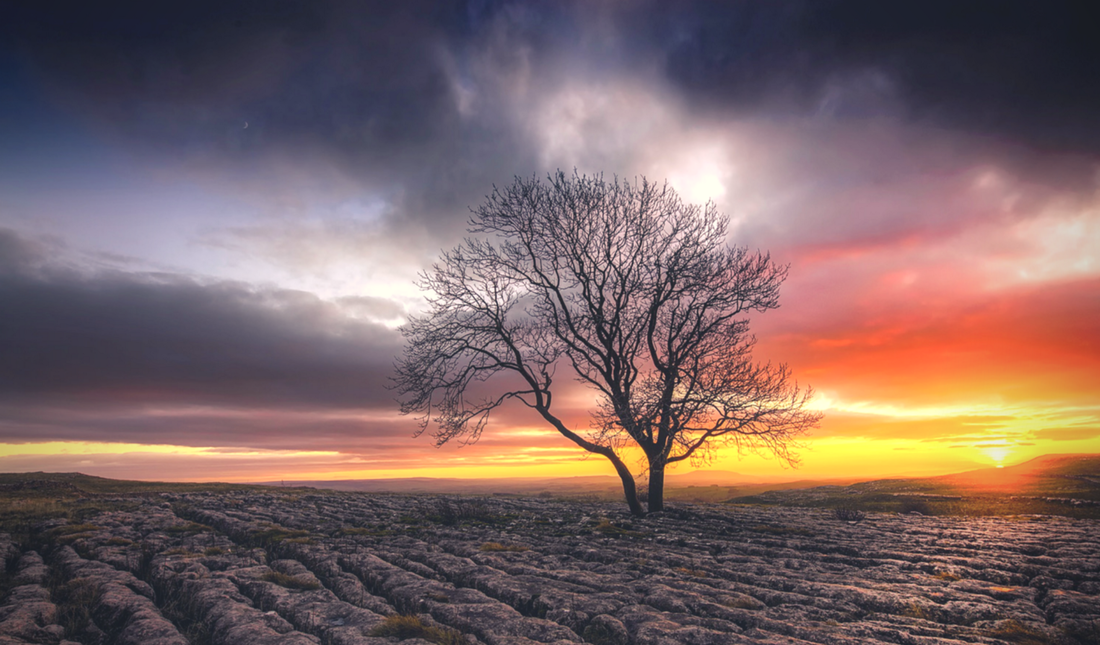
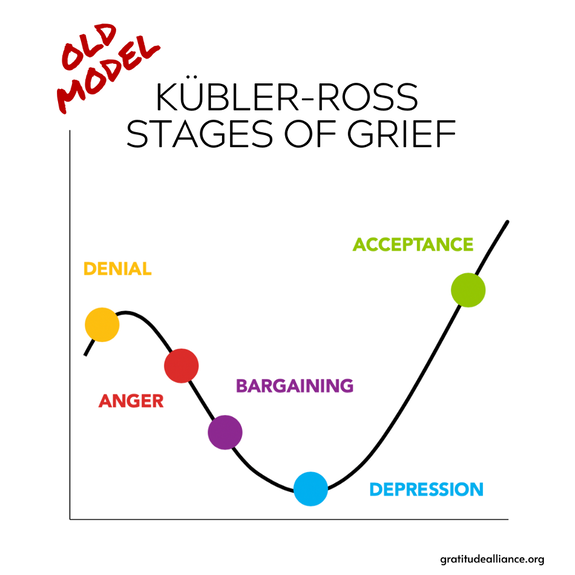
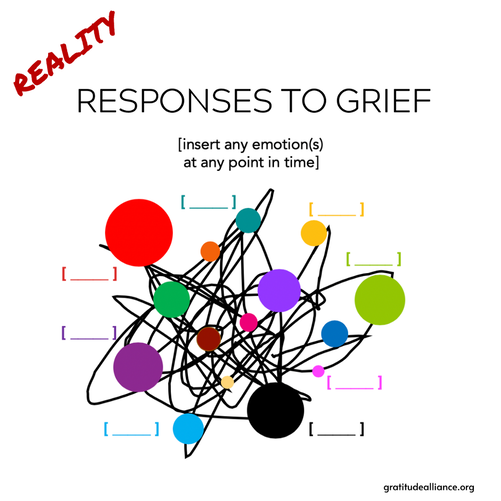
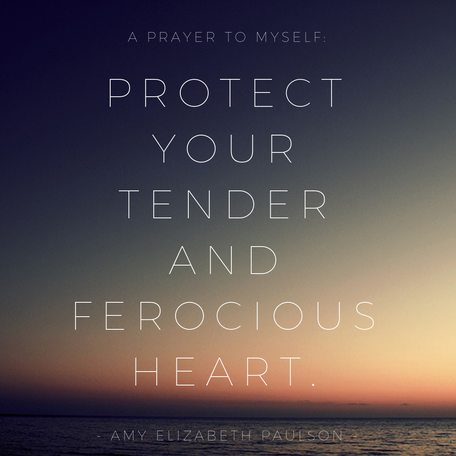
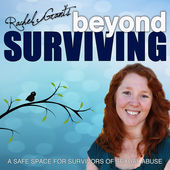
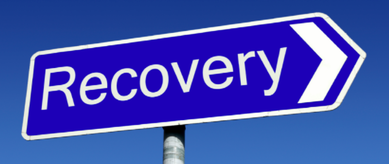
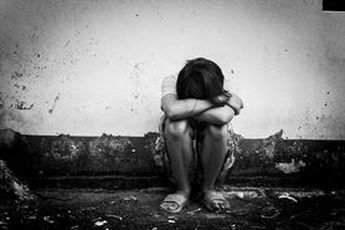
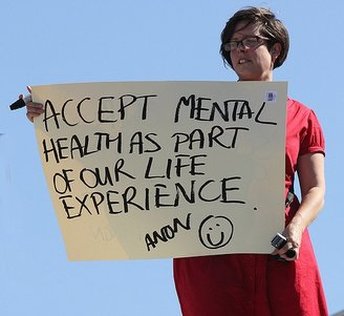
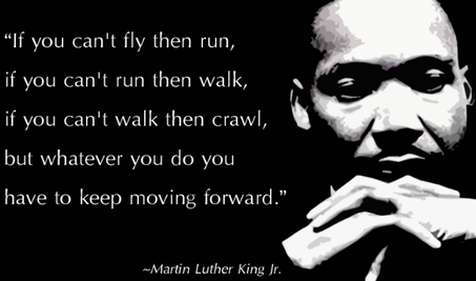
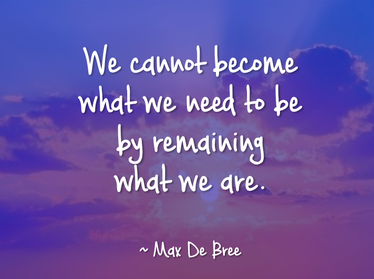
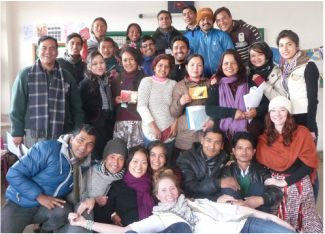
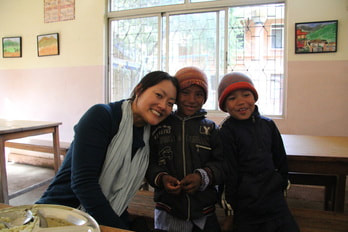
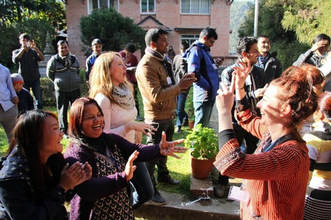
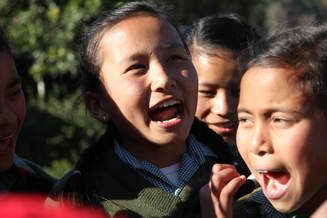
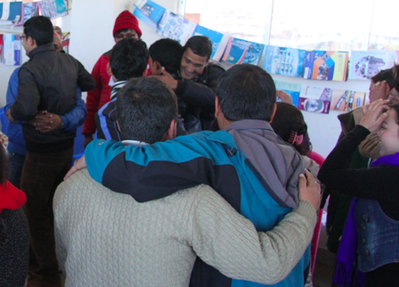
 RSS Feed
RSS Feed